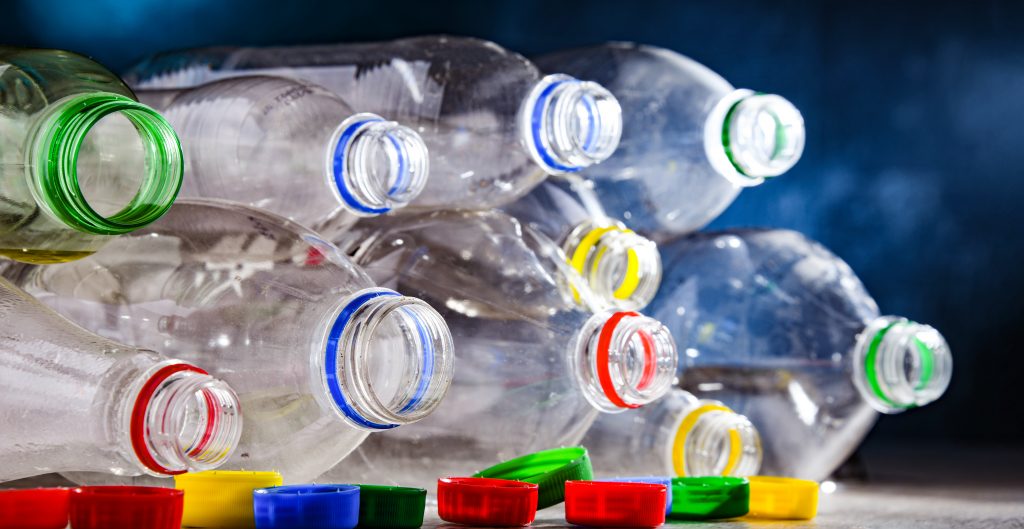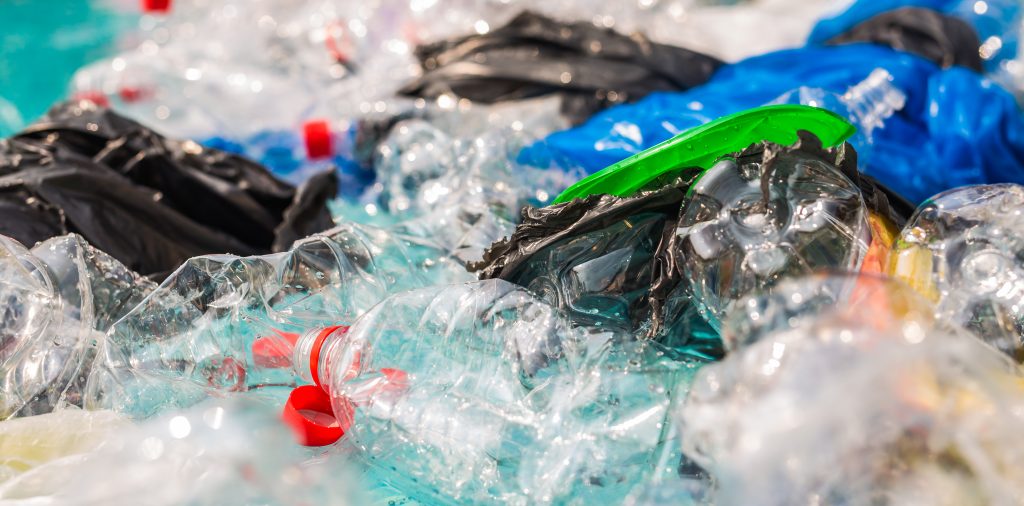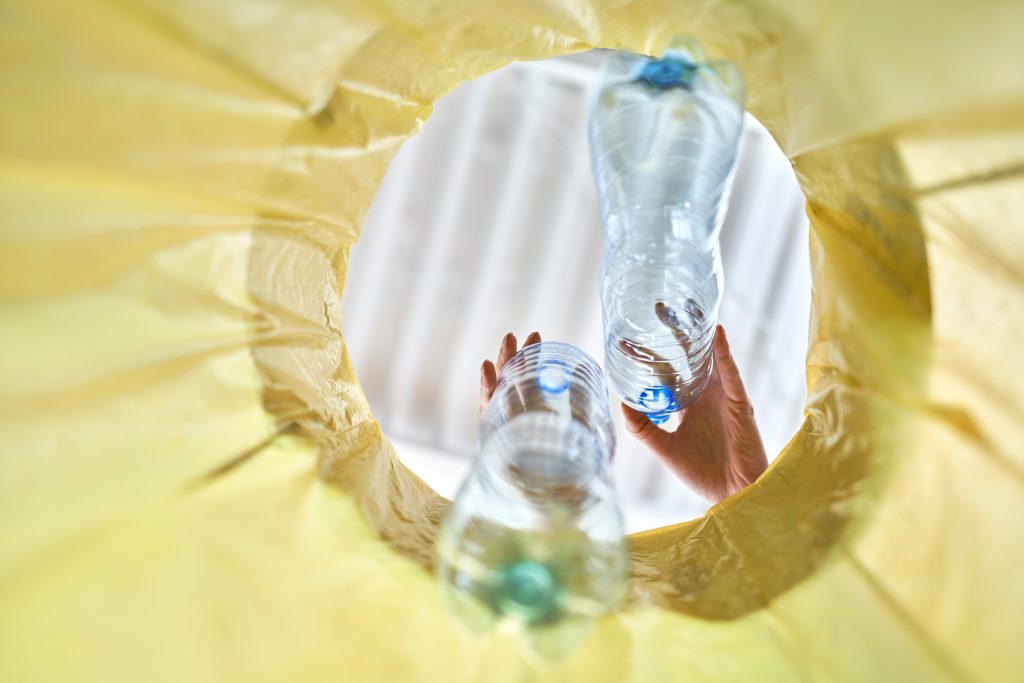In 2019, 20 companies alone were responsible for producing over HALF of the global single-use plastic waste.
Given the current environmental crisis, this is not a top 20 list that any company wants to find itself. This article discusses how to rank at the bottom of this undesirable list and why you’d want to.

Don’t Let Plastic-Free July Pass You By
Plastic-Free July is an annual global campaign initiated by the Plastic Free Foundation, an organisation dedicated to creating a world free of plastic waste. Throughout July, millions are refusing single-use plastics in a bid to decrease the quantity of plastic waste occupying landfill sites and polluting our natural world.
Before we jump into what you as an employee or business can do to minimise plastic waste, it is essential to understand why this is so important.
(Or, if you’re already up to date, click here to see the steps that you as a business can take to reduce plastic waste)
The Problem With Plastic Production and Plastic Waste
1. Green House Gas Emissions

This July, the UK reached a temperature of 40.3 degrees Celsius. The highest temperature ever recorded in the UK, and the first time it exceeded 40 degrees Celcius.
With only around 0.5% of homes in the UK having air-con, it was a very physical reminder of global warming and climate change.
Global warming and climate change result from greenhouse gas emissions blanketing the Earth and preventing heat produced by the sun from dissipating into space. The primary source of this phenomenon is the carbon dioxide and other gases released from burning fossil fuels.
Although it isn’t widely known, fossil fuels are the building blocks of 98% of plastics.
From start to finish, plastics increase greenhouse emissions:
- Extracting and transporting fossil fuels to create plastics
- The process of refining and manufacturing plastic
- Incinerating plastic waste and unmanaged plastic waste degraded by the sun
In total, plastics contribute to around 3.4% of worldwide greenhouse gases.
As well as contributing to greenhouse gases, plastic waste is one of the most damaging environmental pollutants.
2. Environmental Impact of Plastic Waste

Since 1950, humans have manufactured an estimated 9 billion tons of plastic. However, of this, we have only ever recycled 9%.
Recycling rates have improved over the last couple of years, but they’re still far from ideal. Of the 360 million tons of plastic produced annually (roughly the weight of the entire human population!):
- 16% is recycled
- 19% is mismanaged
- 25% is incinerated
- 40% goes to landfills
Waste which is mismanaged and goes to landfill sites uncontrollably leaks into the environment, causing catastrophic damage to wildlife and their habitats.
At least 14 million tons of plastic waste enter our oceans yearly, causing immense harm to marine life and vital ecosystems.

For wildlife, if consumed directly, plastics can gather inside their bodies and cause health issues such as fatal intestinal blockages. Animals have also been trapped and asphyxiated by plastic packaging with rings designed to hold food and drink cans together.
Without help, plastics also do not break down; they only break up, degrading over time, becoming microplastic fragments, less than 5 millimetres in length or roughly the diameter of a pencil eraser.
Tiny and inoffensive, microplastics are easily mistaken for food by wildlife and eaten. In this way, microplastics become a part of our food chain and diets. They are also found in the air we breathe and in our drinking water.
There is little evidence available for the risk to human health from microplastics; however, we do know that plastics contain chemicals that can cause hormonal imbalances, reproductive problems and cancer.
Given the association with the climate crisis and the environmental impact, does plastic use warrant planetary abuse?
3. Single-Use Plastics

Around 50% of the 360 million tons of plastic produced is for single-use items. Companies design them for the sole purpose of being used once and then promptly discarded.
Single-use plastics can serve practical and essential purposes. For example, in healthcare, single-use plastics assist by preventing cross-contamination and infection. However, this only accounts for around 4% of plastic waste.
Packaging accounts for 40%—easily the most significant contributor.
Single-use plastics are a symptom of convenience and waste culture. It’s a versatile, lightweight, moldable, and moisture-resistant material perfect for storing and transporting goods. Inexpensive and disposable, we see them everywhere. It shouldn’t be surprising that packaging is the greatest cause of plastic waste.
Our reliance on plastics is entirely unsustainable, which is why the awareness created by campaigns like plastic-free July is so important.
The use of plastic is a large part of company culture and ingrained into processes, but there are small steps a business can take to minimise its plastic footprints.
The Solutions for Plastic Production and Plastic Waste
1. Plastic Waste and Consumption Postmortem
While demand for plastic still exists, production will not decrease, and the expansion of petrochemical industries.
The pathway by which plastic flows through your company should be known and quantifiable, so cost-effective alternatives that serve the same purpose and reduce planetary impact can begin replacing or minimising the need for plastics.
It is also worth researching new and current suppliers before making further purchases or partnerships to ensure that your sustainability values align.
Requesting sustainable alternatives encourages other companies to adapt to meet consumer requirements and contribute to the total reduction of plastic production and waste.

In terms of physical company waste, don’t worry; deep dustbin diving isn’t required. However, knowing the main contributors to company plastic waste is helpful.
For example, are they supplied internally, such as eating utensils and plastic cups? Ask whether or not any single-use items are essential or if a more sustainable option could replace them. How much waste is packaging, and could items be purchased without it, or would bulk buying reduce plastic packaging.
Not only will this help the environment, but it may also save money.
Reusable items reduce the need to replace or buy new stock continually. Cutting down on the amount of waste created may also lessen the cost of disposing of plastic at recycling or landfill sites.

2. Educate, Inspire and Persuade
For new sustainable policies to work, they must be adopted and embraced by all staff members.
Outside training and courses are a great way for people to learn and understand why new initiatives are so important to combat sustainability issues and how, as an individual, they are contributing to reducing the company’s plastic footprint.
Monthly challenges are a fun way of creating a more eco-friendly workplace.
It could become a team-building exercise where different facilities face off to reduce their plastic waste or a reward for achieving new sustainability targets – anything from a small prize to a bonus to celebrate their success.
It is also an opportunity for everyone to get involved, and people should be encouraged to participate, think and voice their suggestions.
Creating eco-habits and awareness in the workplace may also come with the added benefit of taking sustainable behaviours and commitments home, leading to the reduction of single-use plastics in day-to-day lives.
Concern over plastic pollution is only growing with consumers beginning to favour businesses taking an active stance to minimise waste. Sustainable practices will only raise business social and PR profiles and recognition among new audiences.

3. Provide the Right Recycling Utilities and Materials
A significant source of plastic waste is plastic bottles and food packaging.
Many informative posters and resources are readily available on the internet that perfectly summarises and raises awareness of waste and how small changes could not only help the environment but also save money by investing a little time and money into alternatives.
For example, infographics that show the statistics for the average number of water bottles per person that enter the sea every year, and the cumulative cost, compared to swapping to reusable water bottles.
Or how much single-use packaging is created from shop-bought meals, which could be avoided or at least controlled by bringing in homemade lunches.

Recycling bins should also be readily accessible and easy to use.
Posters and signs are a great way to continually reinforce sustainable workplace habits. You can use signposts to show where the nearest recycling points are to avoid rubbish ending up in general waste or getting rid of individually placed waste bins altogether.
Many people know that recycling plastics is important, but a lot of confusion still exists because not all plastics are recyclable. The outcome? Improper use of bins and recyclable materials still finding their way into incinerators and landfills.
Posters at keys location are helpful resources to show what can or can’t be recycled. Providing pictures and information about the correct bins to use helps prevent any uncertainty and more efficient use of recycling initiatives.

A Final Note
Although the facts and figures are alarming, we hope this blog leaves you feeling encouraged.
Environmental problems, global warming and climate change can feel like impossible crises.
Like anything, tackling the issue head-on and breaking it into smaller, achievable parts is the key to success.
There are small proactive things we can all do personally and professionally that will make a massive impact on the planet.
Times of change are also times of ingenuity, growth and opportunity. Lead the way and pave a better future instead of waiting and following in its wake.
0 Responses to “How to Reduce Plastic Waste in the Workplace”
Leave a Reply